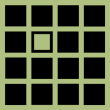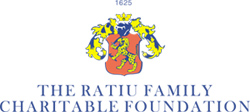UCL School of Slavonic and East European Studies, University College London, 7th Annual International Postgraduate Conference
Inclusion Exclusion
Friday 17 February 4:30 – 6:00: Panel G1: Technological Inclusion
Ferenc Hain (Pázmány Péter Catholic University): ‘Hungarian youth’s social networks on the World Wide Web’
While the Hungarian revolution in 1956 was the first general levy against the totalitarian communist ruling power after the World War II., when it fell, most Hungarians accepted the unsaid offer of the new communist leadership: no political freedom, but they could have something called "socialist consumer society". Nikita Hrucsov appropriately called it "gulashcommunism".
During the political transition in ’89-‘90, in contrast with Poland, Czech Republic or Romania most people had not been involved in the public life and in the political processes in Hungary. System changing came about as a closed agreement between a few intellectuals and the ruling socialist party.
A very special concomitant of all these is that the internet has been spreading much slower in Hungary than for example in any other Visegrad-countries, while the mobile phone usage rate is one of the highests in the reigon. This fits the increasing private communicational needs, but reflects the historically above detailed facts: most Hungarians do not require a plural, widely accessible medium and public sphere.
WiW – "Who is Who", a social network software based online community is a very unusual phenomenon in this context. It was a very original project worldwide in 2002 started by a young information specialist who has central position in a densely knit social network of urban youth, students and young professionals. The community has more than 100 thousand registered members today; nearly every twentieth internet user in Hungary is a WiW-member.
The community is invitation–only; new acquaintance links are recorded between members after mutual agreement. Members use their real names and list of names, which is fully searchable. Members can visualize their network in the community and there are additional services such as: email, topical forums.
Following the goals and the guiding notions of the conference, I investigate in my papper:
- the macro sociological features of network core members, as predictors of creating such a new dimension of social life;
- the technical, readiness and social-cultural conditions of becoming an active member of such a community;
- the way, whether this form of social life can, and if yes, how can accumulate the social capital.
All these three aspects have inclusive and exclusive relations and in a wider societal context it is very important and a new way of social integration - in habermasian sense. As a grassroots initiation, it is a real Civil Project according to John Keane’s Civil Society system.
I researched this online community with traditional survey and interviewing technique combining with the old-new social network methods.




